
Samurai Ninja Museum Tokyo
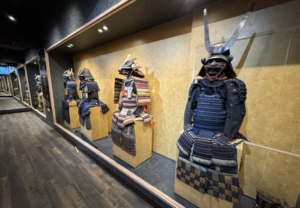
Samurai Museum in Tokyo
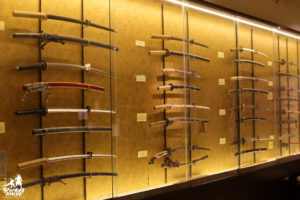
Samurai Museum in Kyoto
Samurai Ninja Museum Tokyo
Samurai Ninja Museum Tokyo offers an immersive journey into Japan’s warrior traditions, blending historical artifacts with interactive activities like sword training and ninja star throwing. Visitors can touch authentic swords and armor, join English-guided tours, delve into the fusion of samurai and ninja culture, and discover the link between history and pop culture through manga and anime. A real-sword gift shop completes the experience, offering authentic souvenirs for enthusiasts.
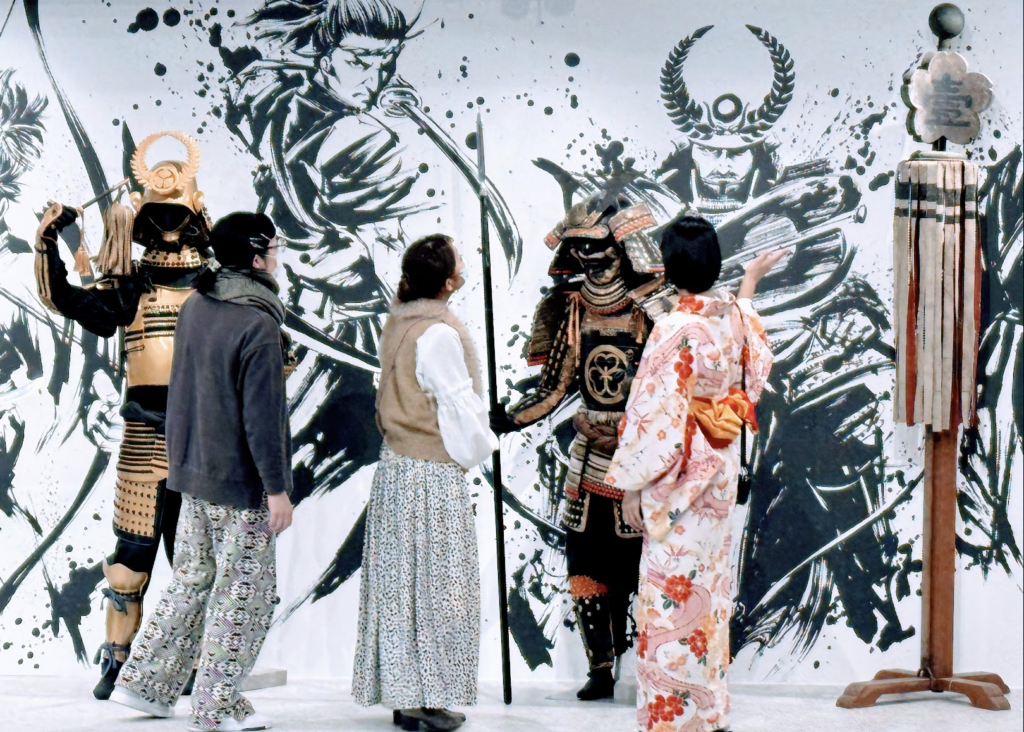
Guests are taking a closer look at the exhibits of Samurai Ninja Museum Tokyo
Immersive museum: Leading a new era of interaction, the museum invites visitors to indulge in hands-on experiences, from sword training to mastering ninja star throwing. Enthusiasts seeking an authentic encounter can opt for on-the-spot ninja training and samurai sword lessons for a nominal additional fee.
Touchable artifacts: Offering a unique chance to touch and hold authentic Edo period swords and armor, visitors forge a palpable link with Japan’s illustrious heritage.
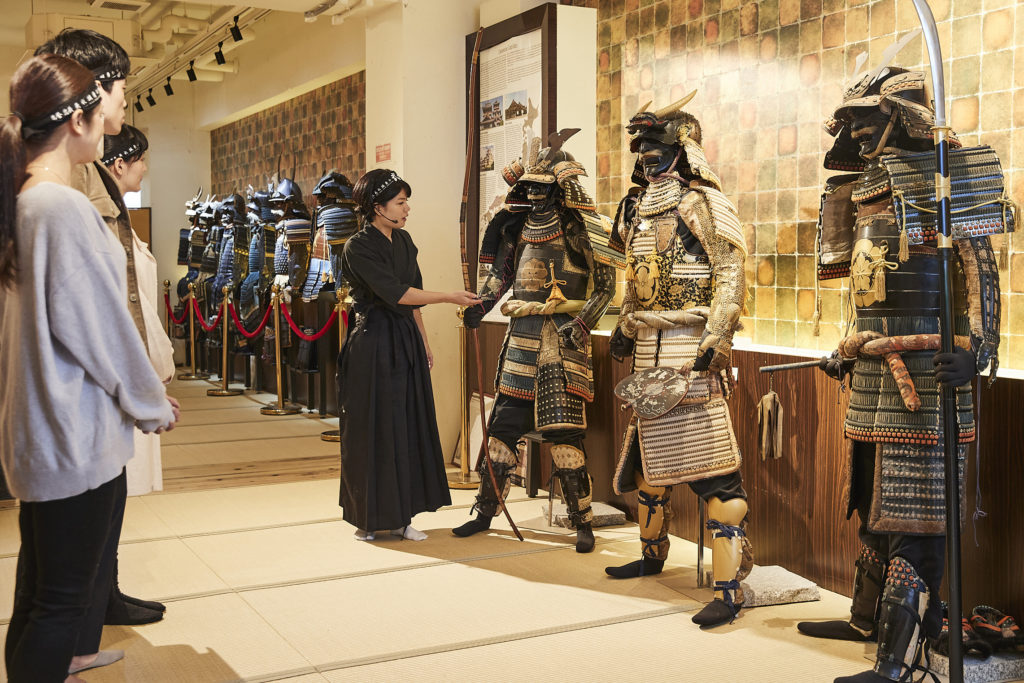
English Guided Tours: Breaking language barriers, the Tokyo Samurai Ninja Museum proudly provides multiple hourly English-guided tours, elevating the visitor experience and catering to diverse audiences.
Fusion of Samurai and Ninja : The basic ticket grants access to an exhilarating array of samurai and ninja artifacts, including the thrill of ninja star throwing. For fervent enthusiasts, special tickets unlock exclusive opportunities such as immersive ninja training, complete with donning ninja attire and mastering specialized techniques.
Pop Culture: Seamlessly blending Japanese popular culture with history, the museum showcases the intriguing correlation between Japan’s past and how it is portrayed in manga and anime.
Real-Sword Katana Gift Shop: Complementing the samurai experience, the museum offers a dedicated samurai gift shop, featuring authentic Japanese swords, katanas and a plethora of souvenirs for aficionados.
Address: at 1-8-13, NishiAsakusa, Taito-ku, Tokyo, the museum welcomes visitors daily from 9:00 AM to 6:00 PM.
Ticketing Details:
- Basic Ticket: Priced at approximately $20, this comprehensive package includes entrance fees, an immersive English-guided tour of Japan’s history, ninja star throwing, samurai armor trials, and occasional samurai shows.
- Special Tickets: Starting from $35, these tickets offer a spectrum of enthralling experiences, from donning full-metal samurai armor to engaging in immersive samurai and ninja hands-on training lessons.
Adults over 18 can savor the traditional samurai experience by donning attire and practicing with a genuine samurai sword under supervision, culminating in the slashing of tatami mats.
Proximity and Collaborations:
Conveniently situated just a 3-minute walk from the revered Sensoji Temple in Asakusa and in proximity to the iconic Tokyo Skytree, the Tokyo Samurai Museum With Experience collaborates with the neighboring Kimono Tea ceremony Maikoya, offering cultural experience combo tickets tailored for families and couples.
Note: The museum is committed to ensuring accessibility for handicapped guests within a three-month timeline. For media inquiries, high-resolution images, and further details about the grand opening event, please contact.
BOOK SAMURAI MUSEUM TOKYO TICKET NOW
Samurai & Ninja Museum Kyoto
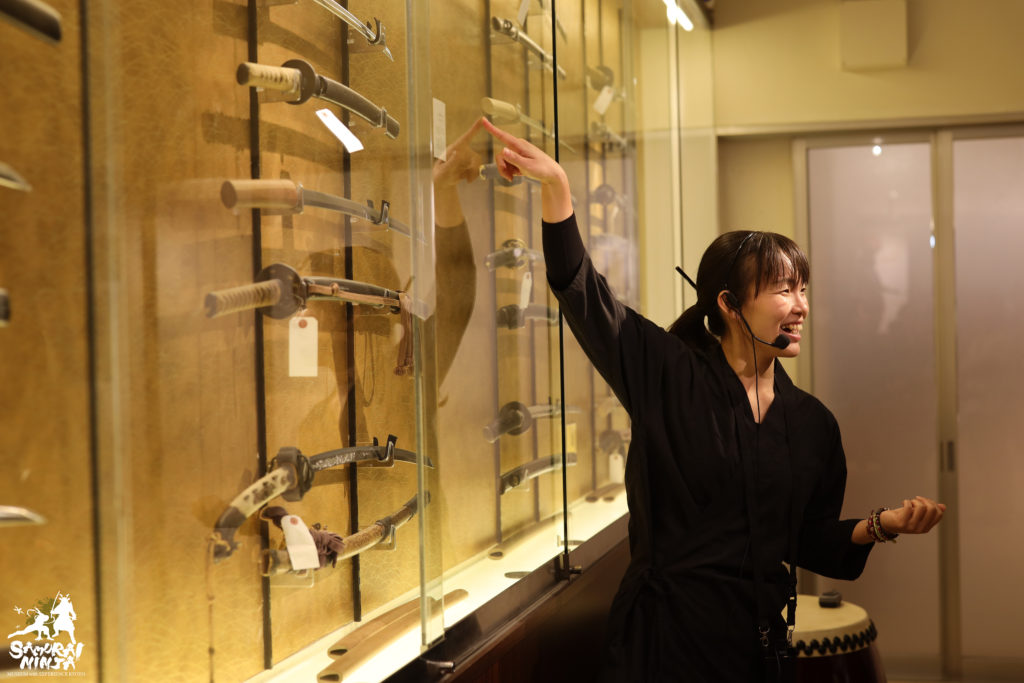
An Immersive Journey into Japan’s Warrior Traditions:
The Samurai Ninja Museum Kyoto offers a unique and engaging way to learn about Japan’s warrior culture. Visitors can explore exhibits of Samurai and Ninja weapons, armor, and tools, and even try on Samurai armor themselves. The museum also offers a variety of Ninja training activities, such as throwing stars and using swords.
Interactive Activities:
One of the highlights of the museum is the opportunity to participate in interactive activities. Visitors can try on Samurai armor, learn how to throw Ninja stars, and even take part in a mock sword fight. These activities are a great way to get a feel for what it was like to be a Samurai or Ninja.
Authentic Artifacts:
The museum houses a collection of authentic Samurai and Ninja artifacts, including weapons, armor, and tools. These artifacts provide a fascinating glimpse into the lives of these warriors. The museum also has a number of exhibits that explain the history and culture of the Samurai and Ninja.
Convenient Location:
The Samurai Ninja Museum Kyoto is conveniently located in the heart of Tokyo. It is easily accessible by public transportation, making it a great option for visitors to the city. The museum is open daily from 10:00 am to 5:00 pm.
Overall, the Samurai Ninja Museum with Experience is a must-visit for anyone interested in Japanese history and culture. The museum offers a unique and engaging way to learn about the Samurai and Ninja, and the interactive activities are sure to be a hit with visitors of all ages.
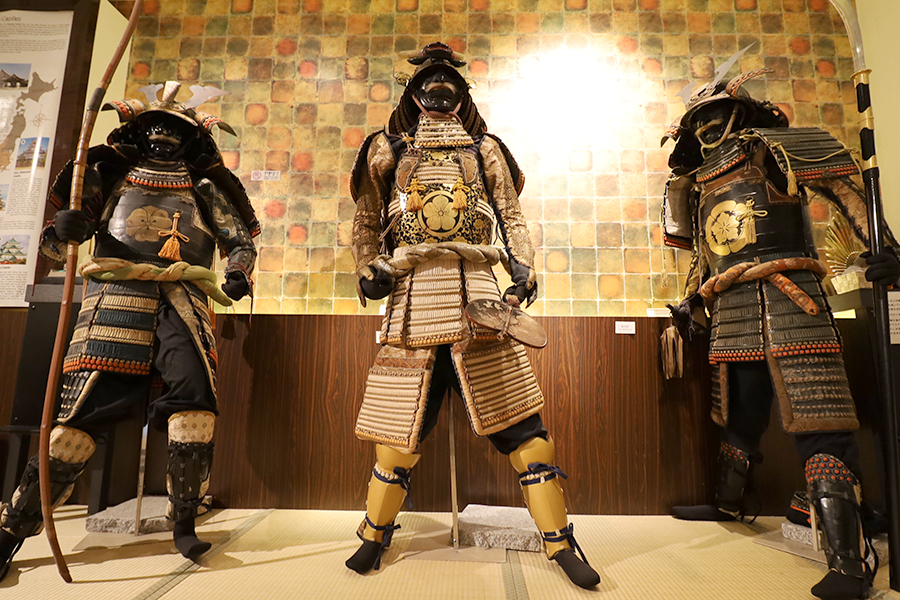
What is the difference between Samurai Ninja Museum Tokyo and Samurai Ninja Museum Kyoto?
Both museums have historic samurai artifacts including but not limited to Edo period armors, swords and weapons. Both museums provide immersive hands on samurai and ninja experiences for adults and also for families and kids. The difference is Samurai Ninja Museum Tokyo focuses on the history and culture of Tokyo while the Samurai Ninja Museum Kyoto focuses on the history and culture of Kyoto. Location wise, The Tokyo Samurai Ninja museum is a walking distance from Sensouji, Asakusa and SkyTree while the Kyoto location is a walking distance from Nishiki Market and Kiyomizu Temple.
Is Samurai Museum Tokyo Open or Closed?
Samurai Ninja Museum Tokyo is open everyday from 9:00 AM to 6:00 PM. People get sometimes confused by the word samurai museum as the words “samurai museum” can’t be copyrighted and multiple places call themselves a samurai museum such as Tokyo Samurai Museum, Samurai & Ninja Museum Kyoto, Berlin Samurai Museum or Dallas Samurai Museum. People also presume the Japanese Sword Museum is a samurai themed museum while it is a room with swords with limited samurai-related exhibitions.
How to buy a ticket to Samurai Museum Tokyo?
The tickets can be purchased online or on site at the door. Online reservations are recommended as the place gets busy and online reservations are cheaper with a 10% discount rate. The tickets have a flexible cancellation policy as they can be cancelled or postponed with a 24-hour notification. The basic tickets costs approximately 3000 JPY for adults and 2700 JPY for kids which includes a history tour, hands on armor trial, interactive ninja experience, museum entrance fee and the samurai show.
The Samurai Museum answer the following questions with the help of tour guides, posters and audio visual demonstrations
- Do Samurai Still Exist?
- Are there foreign samurai?
- Who wins if a samurai and ninja were to fight?
- Are Seppuku and Harakiri the same?
- Facts about samurai in Japan
- Are there female geisha?
- Samurai sword Gift Shop
What is the tour content at the Samurai Ninja Museum Tokyo?
Both The amurai Museum Tokyo and Samurai Ninja Museum Kyoto introduce 5 eras of Samurai: Heian Period, Kamakura Period, Muromachi Period, Edo Period, and Meiji Period. Visitors can wear samurai armor, visitors can also use a real samurai sword. While it is currently on hold, the museums offer samurai shows during certain times of the year. Both museums are conveniently located in the downtown areas of Tokyo and Kyoto respectively.
Where to see Samurai? Samurai Places in Japan
Samurai Ninja Museum Tokyo and Samurai Ninja Museum Kyoto are the two best places to see samurai artifacts, samurai swords and samurai veapons. There are a few other places such as The Kanazawa Samurai House, or Aizu Wakamatsu Castle that show the remains of the old time samurai. You can learn more about them by clciking on this link: samurai of Japan.
Is There a Samurai Museum in Osaka?
There is an affiliate samurai experience and samurai armor/ samurai sword display venue in Namba Osaka. While the place is museum-like, it is rather small compared to the samurai museums in Tokyo and Kyoto mentioned above. Regardless, visitors can reserve a samura experience at the Osaka venue here .
Feudal Japan
Heian Period (794-1185)
The samurai period started in the “Heian Period.” The Taira clan and Minamoto clan protected the emperor. However, they started fighting against each other. After the Genpei War, the Minamoto clan started governing Japan. The emperor had no power.
Kamakura Period (1185~ 1333)
The Minamoto clan moved to Kamakura. They established a military government and the leader was called “Shogun.” Buddhism became more popular. In 1274, Kubilai Khan and the Mongolians attacked Japan. They were defeated by the samurai. The Mongolians attacked in 1281 again and the samurai defeated them again. In both invasions, there were strong winds. The religious people called the winds “KamiKaze.”
Muromachi Period (1336~1573)
50 years after the Mongol invasions, some clans wanted the emperor back. There was an uprising but it was unsuccessful. The capital moved back to Kyoto. The new era started. The Golden Palace and Ryoanji temple were built during this era. In 1467, the shogun had no son to take over the country. Many “daimyo” started fighting against each other. The country was in chaos. There were dozens of small states fighting against each other. The new era was called the “Sengoku Period.”
Azuchi Momoyama Period (1573 ~ 1603)
Oda Nobunaga who was a ruthless warrior finally managed to unify Japan. He started controlling Kyoto in 1573 and this is the beginning of a new era. He was killed by his close general in 1582 at the Honnoji Temple. Honnoji Temple is right next to the Samurai and Ninja Museum in Kyoto. There were still some disagreements among the clans in Japan. In 1600, the clans of the East side of Japan and the clans of the Westside of Japan fought against each other. This was the biggest war in Japan’s history: The Sekigahara Battle. The Eastern army of Tokugawa Ieyasu won.
Edo Period (1603 ~ 1868)
Tokugawa moved the capital to Tokyo. Tokyo became one of the biggest cities in Asia. There was a very strict management system. Noone could enter Japan and no one could leave Japan. The emperor was respected but the shogun was the real ruler of the country. There were more than 100 daimyo who paid tax to the shogun. Each daimyo had hundreds of samurai warriors. The farmers gave all the rice to the daimyo. During the Edo period, 90% of the Japanese in Tokyo could read and write.
The Life of the Samurai
- Samurai means “the one who serves the master.” Although the samurai are warriors, the meaning of the word is not a warrior. The Japanese word for warrior is “Senshi.”
- The samurai boys were given real samurai swords when they were only 5 years old.
- Only the samurai could own 2 swords.
- Only the samurai could have a last name.
- Only the samurai could own a horse.
- Only the samurai could do harakiri.
- Only the members of a samurai family can become samurai.
- Only the samurai wore the heavy armor.
- The samurai were not allowed to have any other jobs.
- The samurai were good in poetry, flower arrangement, and literature.
- The average salary of a samurai was 3 tons of rice a year.
The life of a Ninja
- The meaning of the word ninja is “the one who endures difficulties.”
- In Japan ninja were used to be called “shinobi.”
- There were only 2 ninja clans in Japan: Iga clan and Koka clan.
- The ninjas were farmers. They did not have privileges like the samurai.
- The ninja did not wear a black outfit. Their outfit was usually dark blue or just simple colors.
- The ninja were expected to be not more than 60 kgs.
- The ninja were very good at running. It is reported that some ninjas could run 200 km in one day.
- The ninja can be considered as a spy. They are not warriors.
You can learn more about the samurai and ninja at Samurai Ninja Museum Tokyo or Samurai Ninja Museum Kyoto.
Things You may wonder about Samurai
Samurai and ninja are an integral part of Japanese history and culture. Although these two professions have disappeared over time, their cultural contributions will remain with us for a long time to come.
Could anyone become a samurai?
It wasn’t just the Japanese who could achieve samurai status. Several people born in foreign countries have been given this title. After Bunroku and Keicho no eki, many people born in the Joseon Dynasty were brought to Japan as prisoners or cooperators. Some of them served the daimyo as servants. One of the most prominent figures among them was Kim Eochol, who was given the Japanese name of Wakita Naokata and appointed commissioner of Kanazawa City.
What is Bushido?
Bushido is a moral code concerning the attitudes, behavior, and lifestyle of the samurai. However, historically, samurai have adhered to a multitude of warrior codes, and their interpretations have varied according to samurai clan, individuals, and eras. The earliest type of proto bushido existed from the Kamakura period (1185).
What is Ninjutsu?
Ninjutsu is a martial art, strategy and tactics of unconventional warfare, guerrilla warfare, rebel tactics and espionage practiced by ninjas. Espionage in Japan dates back to the time of Prince Shotoku (572-622). According to Shoninki, the first overt use of ninjutsu during a military campaign was during the Genpei War, when Minamoto no Kuro Yoshitsune selected warriors as shinobi (ninja) during a battle. Throughout history, shinobi have been assassins, scouts, and spies, hired mostly by territorial lords known as daimyo.
What is the image of ninja in Japan?
The image of the ninja entered popular culture during the Edo period, when folk tales and plays about ninjas were conceived. Ninja stories are usually based on historical figures. For example, there are many similar stories of a daimyou challenging a ninja to prove his worth, usually by stealing his pillow or weapon while he slept. Novels have been written about ninjas, such as Jiraiya Goketsu Monogatari, which has also been turned into a kabuki play.
Contact us : info@mai-ko.com

